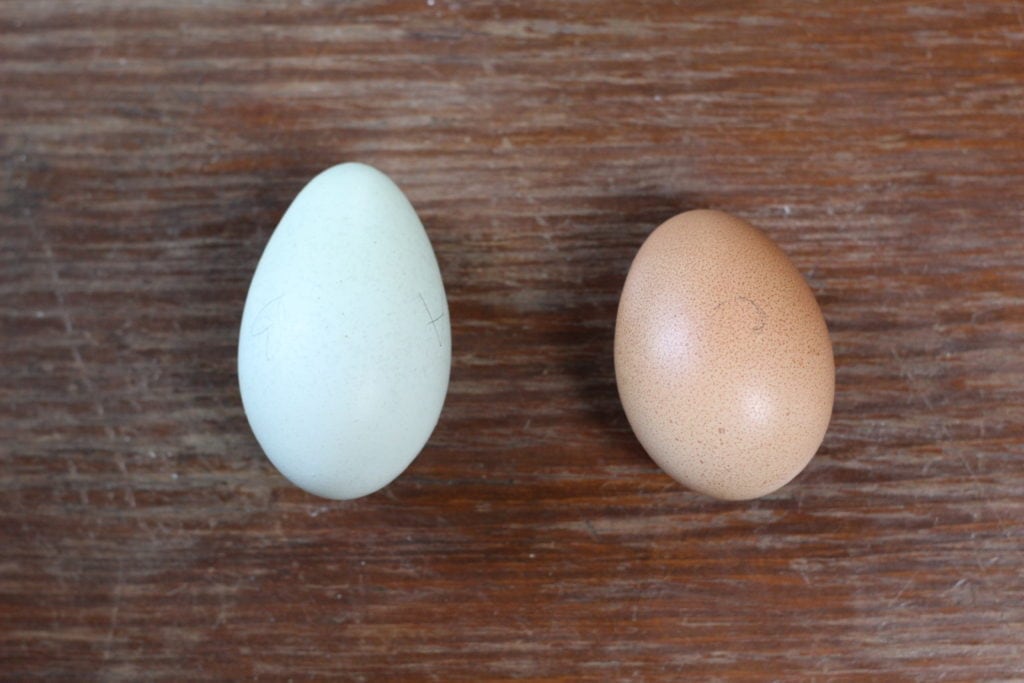How to Label, Grade, and Size Eggs
Labeling eggs for sale can seem like a daunting task. I’ll take you through everything you need to know to label, grade, and size eggs.
Selling Eggs from the Farm or Homestead
Once you have a decent flock of chickens, odds are good you are going to have more eggs than you can eat pretty darn quick. Selling eggs, while hard to make profitable, can be a fun venture for your farm or homestead.
If you plan to sell eggs off farm, there are regulations that you need to follow based on guidelines in your specific state.
I emphasize that last part because the information I am sharing comes from the Minnesota Department of Agriculture. This information may well be the same in your state but I can’t make any guarantees. Please check with your own local department of agriculture for rules and regulations on selling eggs from your farm or homestead.

Source for Egg Labeling Information
This information comes straight from the MN Department of Agricultures Sale of Locally Raised Eggs to Food Facilities. It is straight forward and easy to understand. I highly recommend it if you are in Minnesota and planning to, or are already selling eggs.
How to Label Eggs
Here in Minnesota, eggs are required to have five things listed on the label.
- The Grade and Size of the Eggs
- Name, address, and zip code of the egg seller
- Package date in Julian calendar days (see below for more on that)
- Freshness date that can’t be more than 30 days past the packing date. This can be labeled by saying “Best by__” or “Exp___”
- Safe handling instructions that must read, “To prevent illness from bacteria: Keep eggs refrigerated, cook eggs until yolks are firm, and cook foods containing eggs thoroughly.”
This post contains affiliate links, which means I make a small commission at no extra cost to you. See my full disclosure here.
How to Grade Eggs
Eggs are graded based on the quality and age of the eggs.
If you are just a homestead size producer selling under a certain amount of eggs (again, this is at least true for Minnesota!) you can grade your own eggs.
If you’ve cleaned and and candled your eggs and the shell is a good quality, we next look at age.
- Grade AA – Quality eggs are less than 15 days old
- Grade A – Eggs that do not have special temperature and humidity control degrade to grade A after 15 days.
- Grade B – After 30 days these eggs are typically used for powdered mixes and such, not for eating as plain eggs.
How to Size Eggs
Eggs come in different sizes and size labeling is determined by the overall weight of one dozen eggs, not by the weight of the individual egg itself. I made the mistake of buying one of those cute little chicken shaped eggs scales. Aside from looking cute in a farmhouse it was completely useless for sizing eggs. Lesson learned.

Here’s what the sizing of eggs look like. Again remember, this is per dozen eggs.
- Jumbo – 30 Ounces
- Extra Large – 27 Ounces
- Large – 24 Ounces
- Medium – 21 Ounces
- Small – 18 Ounces
The best way to weigh your eggs is to use a simple kitchen scale. Place an empty carton on the scale and tare it out. Then place a full dozen on the scale. We find that all our eggs tend to fall in the large category.
How to Date Eggs
Eggs must be dated using the Julian calendar system, meaning January 1st is day 001. Last day of December would be 365.
The freshness date should be thirty days past the pack date. So if you pack an egg on June 1st, it is good until July 1st. The day you pack it doesn’t count in the 30 days. So that egg carton pack date would be 152 with an expiration date of 182.
There are Julian calendar date tables free for download online. Make sure you download a new one each year as it will vary with leap years.

How to Make Labels
The easiest and most economical way I have found to make labels is by using Avery.com. This is the company that sells printable label sheets. They happen to have a really easy to use and FREE online design platform. I buy labels at our local office supply store or on Amazon and print them at home.
Label Example
This is exactly what our label looks like, I just changed up some of the personal info. It is designed to fit on a standard mailing label. That way we can print 30 labels on one sheet. You certainly can use a bigger label but that cuts your already small profit margin.

Nutritional Information
Thankfully as a small scale producer you are not required to put additional nutrition information on your eggs. If you plan to re-use cartons, which is allowed, the cartons can’t have any nutritional information on it rom the previous eggs it held.
Shop this Post
As always please shop your local businesses whenever possible! For those days when you just needt order something quick here are some Amazon options.
- Labels
- Cartons – Amazon charges an insane amount for cartons. Our local Fleet Farm charges about 34 cents for one. We actually buy our cartons wholesale from the co-op we sell our eggs to.
More Information
Check out my blog post and video for more information on proper egg handling, cleaning, and packaging.
Watch and Learn
Pin it for Later








